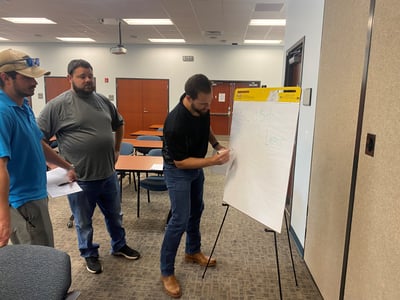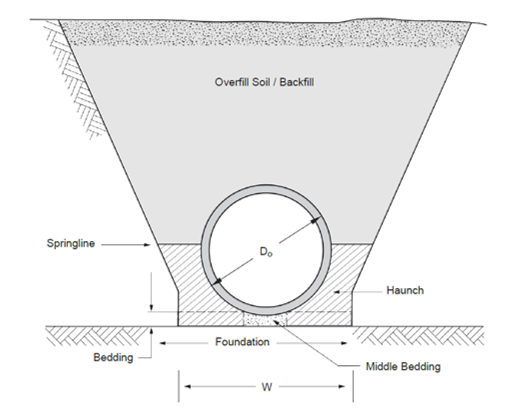
During the recent FCPA seminar "Engineering Management of Storm Drainage Projects" in Land O' Lakes, engineers from throughout the region discussed the pressures faced from clients and constituents. Costs and efficiency ranked at the top.
When it comes to the total cost of storm pipe installation, the pipe material is approximately 20% of the total installed cost, with the remaining costs including: embedment & backfill labor; embedment & backfill soil materials; lift testing; final pipe inspection; and incidental repairs. The most significant costs are backfill labor and materials.
Currently, there is very little, if any, parity in costs between the predominant pipe materials, namely concrete and plastic. Although, pipe pricing can vary by project, the greatest efficiencies overall can be achieved by improving the efficiency of the backfill labor and soils. For example, allowing for thicker lifts above the springline of concrete pipe can reduce the backfill labor by 20%, perhaps more. An additional benefit of less time spent by men and women in the trench - a critical workzone - is safety.
 Above the springline, or midpoint, of the concrete pipe barrel, the Engineer and owner have the ability to use any soil type for backfill that would be considered suitable for the finished grade requirements.
Above the springline, or midpoint, of the concrete pipe barrel, the Engineer and owner have the ability to use any soil type for backfill that would be considered suitable for the finished grade requirements.
In other words, if A-6 material if acceptable for the embankment or overfill, then that soil type is also structurally suitable for concrete pipe to allow use of those materials beginning at the springline. This potentially allows for the use of a wide range of soils - whether select or plastic soil types - which may be available from in-situ sources rather than requiring the import of more costly, select fills.
As was discussed in the Land O' Lakes seminar, only concrete pipe is conducive to thick lifts and a wide range of backfill soils above its springline because:
- Soil above the RCP springline is considered load, not embedment,
- Embedment cradle below the springline is the only support needed for RCP,
- Once embedded, RCP is designed to support loads (typ. 120 lbs/ft3 density) above the springline by AASHTO LRFD code, regardless of overfill soil type or compaction,
- Geotechnical engineers are already capable of testing 12" thick lifts to verify acceptance criteria are met,
- Only for RCP, this is consistent with national standards, design code, and industry recommendations,
- RCP is inherently rigid with minimal dependence on the full soil envelope.
In closing, for Engineers and owners that are in search of impactful solutions to improve efficiency, consider the advantages that concrete pipe offers above its springline. If you would like more information or specification assistance, please feel free to contact the FCPA or one of its members.



COMMENTS